- Home
- Lord Dunsany
Gods, Men and Ghosts
Gods, Men and Ghosts Read online
GODS, MEN AND GHOSTS
The Best Supernatural Fiction of
LORD DUNSANY
Selected, with an introduction by
E. F. BLEILER
With 20 illustrations by
SIDNEY H. SIME
DOVER PUBLICATIONS, INC.
MINEOLA, NEW YORK
Copyright © 1972 by Dover Publications, Inc.
All rights reserved.
Bibliographical Note
Gods, Men and Ghosts: The Best Supernatural Fiction of Lord Dunsany, first published by Dover Publications, Inc., in 1972, and reissued in 2014, is a new selection of stories by Lord Dunsany (reprinted without abridgment) taken from the sources indicated on page 259. The selection was made by E. F. Bleiler, who also wrote the Introduction.
International Standard Book Number
eISBN-13: 978-0-486-78071-9
www.doverpublications.com
“The Lean, High House of the Gnoles” (from “How Nuth Would Have Practised His Art upon the Gnoles”)
Introduction to the Dover Edition
AROUND 1904 a new universe was created, the first original, detailed cosmogony in English literature since the time of William Blake. Great primal gods appeared from nothingness and formed a cosmos; lesser godlings emanated or congealed; forces of nature assumed personality and warred with one another, as neomyth succeeded neomyth in brilliant profusion. The occasion was The Gods of Pegana by the Irish poet, storyteller and dramatist, Lord Dunsany. This book marked the first emergence of a small but strong, steady, self-walled stream of idea and prismatic beauty.
This new universe also showed a stability and capacity for growth that must have surprised even its author. After the Gods there appeared further myths, tales of great heroes and rogues in days that never were, and ultimately stories of the smaller people. “Dunsanean” is the term usually applied to this dream-cosmos, a term that has specific meaning to the reader of fantastic fiction. This word marks an honor that few men share in modern supernatural literature: “Lovecraftian” and “Wellsian” come to mind as parallel words, with “Vernesque” and “Merrittesque” and a few others as poor thirds. The common factor is that each of these men created work so fully formed, so iconized that it is in a sense ideal.
The circumstances under which Dunsany began to write are not known beyond the fact that he felt he had something to say and did not care about everyday matters in literature. “I never write of the things I have seen—which hundreds of others can do as well,—but only of the things I have imagined,” he wrote in 1921. While this is not entirely correct, since he did occasionally write about everyday matters, it is probably 90% true. In his autobiography Patches of Sunlight, years later, he added: “I did not feel as though I was inventing, but rather as though I wrote the history of lands I had known, in forgotten wanderings.”
Edward John Moreton Drax Plunkett, 18th Baron Dunsany, was born in 1878, succeeding to his title in 1899. His family, seated at Castle Dunsany, Meath, not far from Dublin, was one of the oldest in the British peerage, well-known in the Middle Ages as a robber barony. Following the family tradition Dunsany was intended for an Army career, attending Eton and Sandhurst, the British equivalent of West Point. He served in the Boer War and was wounded in World War I.
Dunsany travelled a great deal, and spent much of his time hunting big game in Africa. As he once commented, although he had some reputation as a literary man, he had really devoted most of his life to soldiering and hunting. Indeed, While the Sirens Slept, one of his autobiographical books, is in large proportion a record of kills. He was a good cricket player, and as might have been guessed from his stories, a chess enthusiast. He created many published chess problems, won the chess championship of Ireland, and even managed to hold the World Champion, Capablanca, to a draw in a simultaneous exhibition in London.
In his old age, Dunsany occasionally lectured at universities. He was guest Byron Professor of English at the University of Athens during World War II, and barely escaped at the height of the German invasion. He died in 1957, not long after a visit to the United States.
In person, Dunsany was a very tall, gaunt man, who put on flesh in later life. Genial and hearty in his earlier days, he seems to have become crotchety and irascible in his later years. All in all, he gave the impression of a traditional British hunting squire like Jorrocks more than he did a semimystical playwright and storyteller. Mrs. Littlefield’s personality sketch of Dunsany, based on his stay in California during the coronation of Queen Elizabeth II (which he refused to attend because he felt slighted), is likely to surprise anyone who believes that “he who writes fine poetry himself finely poetic should be.”
During his lifetime, Lord Dunsany had two worldwide reputations. He was known as a playwright, loosely attached for a time to the new Irish drama of Synge, Lady Gregory and Yeats. At one time Dunsany considered financing their enterprises; at another his plays shared the stage with theirs in England and the United States. It was a forced association, however, for Dunsany really had little enthusiasm for Irish cultural nationalism, whether Synge’s romantic realism or Yeats’s poetic antiquarian-ism. Dunsany’s world lay sometimes in his own dreams, sometimes in the present, where he savagely attacked elements of our world he did not like. Among his better-known plays are A Night at an Inn, possibly the finest, in which Toff discovers that his worldly wisdom is powerless against the supernatural; The Glittering Gate, in which two burglars try to break into Heaven; and Cheezo, in which a young man whose clerical career is faltering because he cannot believe in eternal damnation, sees his error after a glimpse at big business.
Dunsany the dramatist, however, was not wholly a happy entity, for his talents did not really lie on the stage. The best that can be said of his plays today is that they are occasionally original, ingenious, shimmeringly decorated with language, but stiff, dull and pointless. They bear some anticipations of the theatre of the absurd, but the resemblance is surface rather than essence. Dunsany stated emphatically, many times, that he was not an allegorist or symbolist, that he was not writing for interpretation, and that he had no higher truths to offer or disclaim, beyond what emerged unconsciously.
Dunsany’s second reputation, the more lasting one, was as a writer of fantasy. Here he wrote two types of stories, the earlier dreamland works and the later everyday adventures and prevarications.
The Gods of Pegana (1905) and Time and the Gods (1906) established the worlds of private wonder in terms of myth and legend. Within their ambience there took place many stories of heroes, demigods, petty gods, ephemeral beings and creatures of twilight: The Sword of Welleran (1908), A Dreamer’s Tales (1910), The Book of Wonder (1912), Tales of Wonder (1916). These collections also contain occasional stories that have some foothold in our own world.
In the 1920’s Dunsany tried his hand at three longer works, two of which are still in the tradition of gods and heroes. These were The King of Elfland’s Daughter (1924), the only work in which he succeeded in enlarging one of his facet-universes into a full globe; The Charwoman’s Shadow (1926), a traditional fairytale reworked, and The Blessing of Pan (1927), in which the Great God Pan emerges to awaken ecstasy in a dreary, modern English village.
During the late 1920’s Dunsany started to explore a different fictional territory, a series of stories based on his own travel experiences, narrated by a drunken old liar at a London club to cadge drinks. Dunsany started this series at the request of friends, but with great reluctance, since he disliked using untransformed experience. Eventually he worked out a compromise that satisfied his aesthetics: “the background is all true; the cactus forests of Kenya are there... the lie is the tale itself, worked up with this material as a goldsmith will make a winged godd
ess from honest gold.” These Jorkens stories, which are occasionally excellent, are related in several books: Travel Tales of Mr. Joseph Jorkens (1931), Jorkens Remembers Africa (1934), Jorkens Has a Large Whiskey (1940), The Fourth Book of Jorkens (1948) and Jorkens Borrows Another Whiskey (1954). In the same vein is Little Tales of Smethers (1953). Untypical and unraera-orable is his last important work, The Last Revolution (1953), which is concerned with self-reproducing, intelligent machines.
This is only a partial list of Dunsany’s works, for he was a prolific writer and worked in (or out of) many literary forms. He also wrote a good deal of poetry, with a goose-quill pen that splattered badly; most of this harks back to the 1890’s in manner. There were also books of reminiscences, autobiographical fragments, stories of contemporary Irish life, war propaganda, aesthetic essays and a fair amount of material that does not fit into exact categories. Of all, the short story seems to have been his favorite form, especially where it approached the peripheral ranges of the prose poem or the narrative-of-point. Most of his work is short, since he apparently did not have the patience to work at length, and believed in putting his ideas into final form immediately. He was a lapidary rather than an architect.
Much of this work is now half-lost in the periodicals of his life-span, or is to be found in out-of-print books that no one reads anymore. Most of it, unfortunately, is ephemeral, and has little survival value except as tour de force. Like Chesterton, Dunsany had the fatal faculty of being able to turn almost anything into a saleable story. Indeed, he once claimed that he could write a story about the mud of the Thames, which he did. Probably no one else in modern literature has had this gift as strongly, and probably no one else has suffered so much from it a generation or so later.
Yet despite material that is too slight to survive, or repeats themes which had previously been exhausted, Lord Dunsany wrote some first-class work that is unique in English and will be read well into the future. If his range is narrow, his power is great within that range. If he had few ideas to offer, he had the power of awakening secondary ideas in others. If he is indifferent or hostile to the literary flow around him, he offers an individual beauty of language that is an inimitable mixture of cerebral and half-dream. There have been many imitators of Dunsany’s work, but no successors. “The Three Sailors’ Gambit” is still the best chess story that has ever been written, while the sly humor and outrageous plotting in “Nuth” and “Thangobrind” make their exploits inexhaustible. Dreams and dreaminess have seldom travelled beyond Bethmoora and the Yann, while epic grandeur is miniaturized in many of the sketches of Time and the Gods. The permanent Lord Dunsany may not be large in bulk, but it is uniquely personal, brilliant, and high.
Associated in this book with Lord Dunsany, as he was in many books, is Sidney H. Sime, 1867–1942), pronounced “seem.” Sime came to be more than simply an illustrator of Dunsany’s stories; he became an active collaborator, and in their later association even contributed the first creative impulse.
Born into an impoverished Yorkshire family, Sime worked for a time as a child coal miner, but eventually escaped from his environment. After a succession of small jobs he studied art at the Liverpool School of Art, did occasional journalistic work, and gradually became known in the London publishing world. In later life he inherited money, edited The Idler for a time, and retired outside London. Martin Gardner, in his excellent essay “Sidney Sime of Worplesdon,” gives many details about his fantastic later life. Today, however, Sime is remembered for his illustrations to Dunsany stories, together with similar work for Arthur Machen.
Just how Sime and Dunsany came to work together is not clear, since Dunsany has given two different accounts of the incident. For several books, they collaborated in the usual manner, with Sime preparing illustrations to a story that had already been written. In The Book of Wonder, however, this situation became reversed. Dunsany visited Sime, examined a series of pictures that were in various stages of completion, and wrote stories that he thought would fit them. Dunsany’s interpretation may not always have been Sime’s intention, however. In his autobiography, Patches of Sunlight, Dunsany says, “I had particularly asked Mr. Sime not to tell me what the pictures were about, and he only tried to explain one to me, but I could not quite follow. When I showed him a story, and asked him if it accurately described what was going on in the picture, he said, ‘It sounds extremely probable.’ “
Four of the stories in the present collection (taken from The Book of Wonder) were composed in this fashion: “The Distressing Tale of Thangobrind,” “The Hoard of the Gibbelins,” “How Nuth Would Have Practised His Art” and “The Coronation of Mr. Thomas Shap.”
After Sime’s death Lord Dunsany prepared an obituary tribute to him in the Fortnight. “There was in his pictures a sombre grandeur showing all the majesty of night or the mystery of dark forests, like a joke by a god whom nobody worships... and yet his sombre shadows... are always lit by the rays of his merry humor. Now that vast imagination has left us, having enriched our age with dreams that we have not entirely deserved....”
This could stand equally well for Dunsany at his best.
E. F. BLEILER
New York, 1971
Contents
MEN
The Three Sailors’ Gambit
The Three Infernal Jokes
The Exiles’Club
Thirteen at Table
The Wonderful Window
The Bureau d’Echange de Maux
The Ghosts
The Probable Adventure of the Three Literary Men
The Coronation of Mr. Thomas Shap
Poor Old Bill
HEROES AND WONDERS
The Hoard of the Gibbelins
How Nuth Would Have Practised His Art upon the Gnoles
Chu-bu and Sheemish
A Story of Land and Sea
The Distressing Tale of Thangobrind the Jeweller, and of the Doom That Befell Him
The Sword of Welleran
The Fortress Unvanquishable, Save For Sacnoth
The Injudicious Prayers of Pombo the Idolater
How Plash-Goo Came to the Land of None’s Desire
Bethmoora
Idle Days on the Yann
The Hashish Man
A Narrow Escape
JORKENS
The Sign
The Neapolitan Ice
Jorkens Consults a Prophet
The Walk to Lingham
How Ryan Got out of Russia
A Mystery of the East
GODS
The Gods of Pegana
Time and the Gods
The Coming of the Sea
The Secret of the Gods
In the Land of Time
Sources
List of Illustrations
“The Lean, High House of the Gnoles”
The Fortress
The Edge of the World
Oneleigh
“A Herd of Black Creatures”
The Coronation of Mr. Thomas Shap
“Little Cottages... Whose Looks We Did Not Like”
The Ominous Cough
“There the Gibbelins Lived and Discreditably Fed”
“We Are But Dreams, Let Us Go Among Dreams”
“Welleran! And the Sword of Welleran!”
Bird of the River
The Gate of Yann
Pegana
The Dreams of MANA-YOOD-SUSHAI
Mung and the Beast of Mung
“It”
The Ship of Yoharneth-Lahai
Slid
The Tomb of Morning Zai
The Fortress (from “The Fortress Unvanquishahle, Save For Sacnoth”)
MEN
The Edge of the World (from “The Probable Adventure of the Three Literary Men”)
The Three Sailors’ Gambit
SITTING some years ago in the ancient tavern at Over, one afternoon in spring, I was waiting as was my custom for something strange to happen.
In this I was not alwa
ys disappointed, for the very curious leaded panes of that tavern, facing the sea, let a light into the low-ceilinged room so mysterious, particularly at evening, that it somehow seemed to affect the events within. Be that as it may, I have seen strange things in that tavern and heard stranger things told.
And as I sat there three sailors entered the tavern just back, as they said, from sea and come with sun-burned skins from a very long voyage to the South; and one of them had a board and chessmen under his arm, and they were complaining that they could find no one who knew how to play chess. This was the year that the Tournament was in England. And a little dark man at a table in a corner of the room, drinking sugar and water, asked them why they wished to play chess; and they said that they would play any man for a pound. They opened their box of chessmen then, a cheap and nasty set, and the man refused to play with such uncouth pieces, and the sailors suggested that perhaps he could find better ones; and in the end he went round to his lodgings near by and brought his own, and then they sat down to play for a pound a side. It was a consultation game on the part of the sailors, they said all three must play.
Well, the little dark man turned out to be Stavlokratz.
Of course he was fabulously poor, and the sovereign meant more to him than it did to the sailors, but he didn’t seem keen to play, it was the sailors that insisted; he had made the badness of the sailors’ chessmen an excuse for not playing at all, but the sailors had overruled that, and then he told them straight out who he was, and the sailors had never heard of Stavlokratz.
Well, no more was said after that. Stavlokratz said no more, either because he did not wish to boast or because he was huffed that they did not know who he was. And I saw no reason to enlighten the sailors about him; if he took their pound they had brought it on themselves, and my boundless admiration for his genius made me feel that he deserved whatever might come his way. He had not asked to play, they had named the stakes, he had warned them, and gave them first move; there was nothing unfair about Stavlokratz.

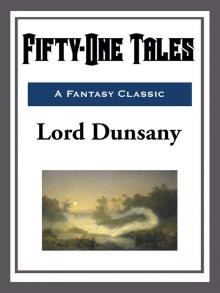 Fifty-One Tales
Fifty-One Tales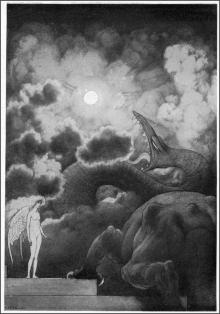 Time and the Gods
Time and the Gods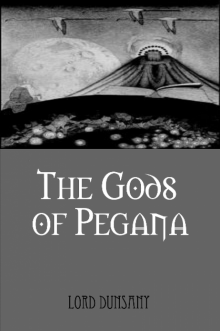 The Gods of Pegana
The Gods of Pegana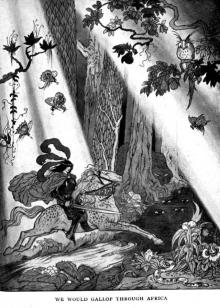 A Dreamer's Tales
A Dreamer's Tales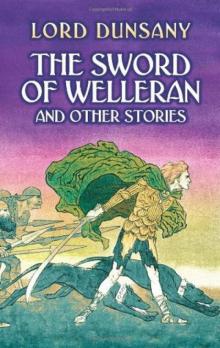 The Sword of Welleran and Other Stories
The Sword of Welleran and Other Stories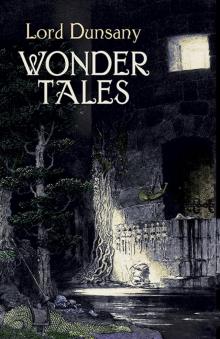 Tales of Wonder
Tales of Wonder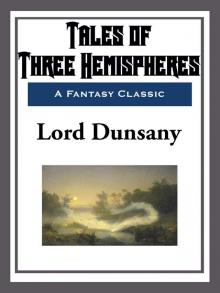 Tales of Three Hemispheres
Tales of Three Hemispheres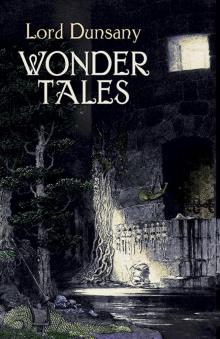 The Book of Wonder
The Book of Wonder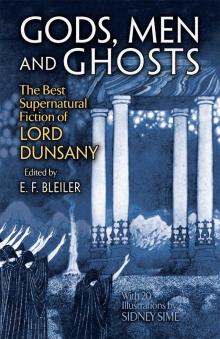 Gods, Men and Ghosts
Gods, Men and Ghosts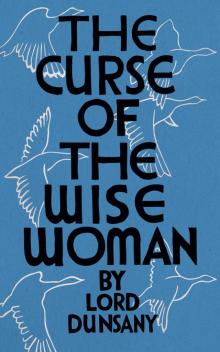 The Curse of the Wise Woman
The Curse of the Wise Woman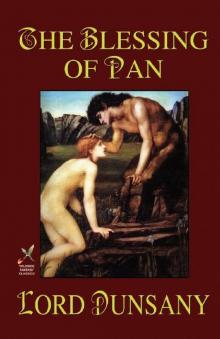 The Blessing of Pan
The Blessing of Pan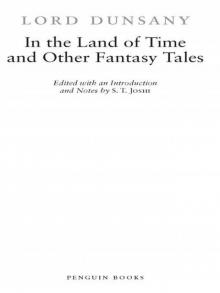 In the Land of Time
In the Land of Time